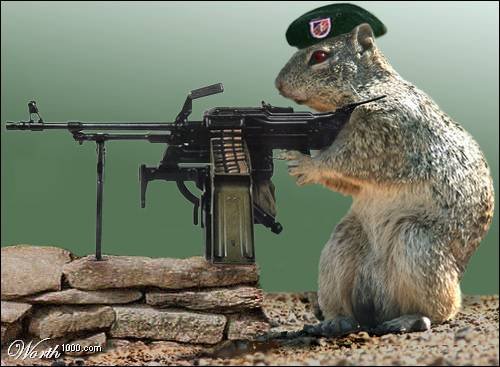
Having performed squirrel removal in Chicago for years, we know how much damage an aggressive squirrel can cause to your property. But still, even this incident is a new one to us.
In a blatant act of aggression, the Chicago squirrel mafia placed a hit on Chicago Alderman Howard B. Brookins Jr.
On November 13, 2016, alderman Brookins was enjoying a recreational bike ride along the Cal-Sag trail when he was jumped by the squirrel mafia hit man.
The squirrel laid in wait for Brookins to ride by and then threw himself into the bicycle wheel spokes, causing the victim to be thrown head first over his handle bars at a high rate of speed.
The victim received a fractured skull, broken nose and had several teeth knocked out. The perpetrator was killed in the attack but not before seriously injuring the alderman.

Why did the squirrel mafia order the hit?
The reasons for the hit on alderman Brookins was immediately apparent to his colleagues and followers of Chicago politics.
Howard was a well known outspoken critic of the Chicago squirrel mafia and their destructive property crimes.
Only the month before, Brookins had attacked the squirrels at a city council meeting, saying that “aggressive squirrels were undermining the effort to overhaul the city’s trash carts, (reported the Chicago Sun Times). The squirrels were gnawing through the garbage cart lids at a cost of $300,000 to the city.”
Little did he know that the Chicago squirrel mafia would not tolerate this attack on their campaign of destruction across Chicago and it’s suburbs. Squirrels are ruthless though.
We at Attic Solutions want you and the rest of law abiding citizens to remain vigilant in the face of this attack.
We cannot let them get away with this!
If you have a problem with squirrels destroying your property, let this be a warning to you that you should call the professionals.
We are not afraid of them! We at Attic Solutions are here to protect you and your loved ones!
Call us today for squirrel removal at (847) 464-1861
Sources: NPR | Washington Post |
Image credit: CoC Wiki







 I hope that smell isn't what I think it is...
I hope that smell isn't what I think it is...
 Charging rent is not the answer.
Charging rent is not the answer.


